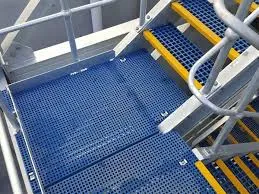
-
 Afrikaans
Afrikaans -
 Albanian
Albanian -
 Amharic
Amharic -
 Arabic
Arabic -
 Armenian
Armenian -
 Azerbaijani
Azerbaijani -
 Basque
Basque -
 Belarusian
Belarusian -
 Bengali
Bengali -
 Bosnian
Bosnian -
 Bulgarian
Bulgarian -
 Catalan
Catalan -
 Cebuano
Cebuano -
 China
China -
 China (Taiwan)
China (Taiwan) -
 Corsican
Corsican -
 Croatian
Croatian -
 Czech
Czech -
 Danish
Danish -
 Dutch
Dutch -
 English
English -
 Esperanto
Esperanto -
 Estonian
Estonian -
 Finnish
Finnish -
 French
French -
 Frisian
Frisian -
 Galician
Galician -
 Georgian
Georgian -
 German
German -
 Greek
Greek -
 Gujarati
Gujarati -
 Haitian Creole
Haitian Creole -
 hausa
hausa -
 hawaiian
hawaiian -
 Hebrew
Hebrew -
 Hindi
Hindi -
 Miao
Miao -
 Hungarian
Hungarian -
 Icelandic
Icelandic -
 igbo
igbo -
 Indonesian
Indonesian -
 irish
irish -
 Italian
Italian -
 Japanese
Japanese -
 Javanese
Javanese -
 Kannada
Kannada -
 kazakh
kazakh -
 Khmer
Khmer -
 Rwandese
Rwandese -
 Korean
Korean -
 Kurdish
Kurdish -
 Kyrgyz
Kyrgyz -
 Lao
Lao -
 Latin
Latin -
 Latvian
Latvian -
 Lithuanian
Lithuanian -
 Luxembourgish
Luxembourgish -
 Macedonian
Macedonian -
 Malgashi
Malgashi -
 Malay
Malay -
 Malayalam
Malayalam -
 Maltese
Maltese -
 Maori
Maori -
 Marathi
Marathi -
 Mongolian
Mongolian -
 Myanmar
Myanmar -
 Nepali
Nepali -
 Norwegian
Norwegian -
 Norwegian
Norwegian -
 Occitan
Occitan -
 Pashto
Pashto -
 Persian
Persian -
 Polish
Polish -
 Portuguese
Portuguese -
 Punjabi
Punjabi -
 Romanian
Romanian -
 Russian
Russian -
 Samoan
Samoan -
 Scottish Gaelic
Scottish Gaelic -
 Serbian
Serbian -
 Sesotho
Sesotho -
 Shona
Shona -
 Sindhi
Sindhi -
 Sinhala
Sinhala -
 Slovak
Slovak -
 Slovenian
Slovenian -
 Somali
Somali -
 Spanish
Spanish -
 Sundanese
Sundanese -
 Swahili
Swahili -
 Swedish
Swedish -
 Tagalog
Tagalog -
 Tajik
Tajik -
 Tamil
Tamil -
 Tatar
Tatar -
 Telugu
Telugu -
 Thai
Thai -
 Turkish
Turkish -
 Turkmen
Turkmen -
 Ukrainian
Ukrainian -
 Urdu
Urdu -
 Uighur
Uighur -
 Uzbek
Uzbek -
 Vietnamese
Vietnamese -
 Welsh
Welsh -
 Bantu
Bantu -
 Yiddish
Yiddish -
 Yoruba
Yoruba -
 Zulu
Zulu
fiberglass settler
Understanding Fiberglass Settlers A Comprehensive Overview
Fiberglass settlers, widely utilized in various industrial applications, are integral components in the process of separating solids from liquids. Often found in water treatment facilities, mining operations, and chemical processing plants, these structures are designed to enhance the efficiency of sedimentation processes. The significance of fiberglass settlers lies not only in their operational efficacy but also in their material properties, which offer numerous advantages over traditional settling tanks.
The Design and Functionality of Fiberglass Settlers
Fiberglass settlers are primarily designed to utilize gravity to separate suspended solids from liquids. The settlers consist of a large tank where the liquid enters and facilitates the settling of particles. The design often includes a series of inclined or vertical tubes that increase the surface area for sedimentation, thus promoting faster settling rates.
The unique properties of fiberglass, such as its resistance to corrosion and lightweight nature, make it an ideal material for constructing settlers. Unlike metal or concrete tanks, fiberglass is less susceptible to chemical degradation, making it suitable for harsh environments often encountered in industrial processes. Furthermore, the lightweight nature of fiberglass allows for easier transportation and installation, reducing labor costs and time.
Advantages of Using Fiberglass Settlers
One of the primary advantages of fiberglass settlers is their durability. In environments where traditional materials may corrode or weaken, fiberglass offers long-lasting performance. This resilience ensures minimal maintenance and repair costs, allowing facilities to allocate resources more effectively.
fiberglass settler

Another significant benefit is the efficiency of fiberglass settlers in separating solids
. The design of these settlers often allows for higher loading rates and better sedimentation, leading to improved overall efficiency in the treatment process. By optimizing the separation process, industries can achieve better quality effluent, which is crucial for compliance with environmental regulations.Moreover, fiberglass settlers can be customized to meet specific operational requirements. Manufacturers can tailor the dimensions, configurations, and additional features of the settlers to suit various applications, making them versatile solutions across different industries. This adaptability is particularly beneficial in industries with fluctuating demands or specific treatment challenges.
Applications of Fiberglass Settlers
Fiberglass settlers are utilized in numerous fields, each benefiting from their specific features. In water and wastewater treatment, these settlers play a key role in clarifying liquids by removing sediment before further processing. This clarification not only enhances water quality but also aids in the efficiency of subsequent treatment stages, such as filtration and disinfection.
In mining operations, fiberglass settlers are used to separate valuable minerals from slurry. The effectiveness of these settlers helps maximize resource recovery, ensuring that industries can operate sustainably. Additionally, in the chemical industry, fiberglass settles can facilitate the separation of byproducts from processes, improving overall operational efficiency and product yield.
Conclusion
In summary, fiberglass settlers represent a vital innovation in the field of industrial separation processes. Their superior material properties and design advantages make them an ideal choice for a range of applications, from water treatment to mining and beyond. As industries continue to seek more effective and sustainable solutions, the role of fiberglass settlers is likely to expand, contributing to improved efficiency, reduced environmental impact, and enhanced economic viability. As technology advances, further innovations in the design and functionality of fiberglass settlers can be anticipated, promising even greater strides in industrial separation techniques.
Latest news
-
Exploring the Benefits of Top Hammer Drifter Rods for Enhanced Drilling PerformanceNewsJun.10,2025
-
High-Precision Fiberglass Winding Machine for GRP/FRP Pipe Production – Reliable & Efficient SolutionsNewsJun.10,2025
-
FRP Pipes & Fittings for Shipbuilding - Corrosion-Resistant & LightweightNewsJun.09,2025
-
Premium FRP Flooring Solutions Durable & Slip-ResistantNewsJun.09,2025
-
Premium Fiberglass Rectangular Tanks Durable & Lightweight SolutionNewsJun.09,2025
-
Tapered Drill String Design Guide Durable Performance & UsesNewsJun.09,2025









